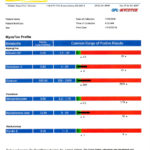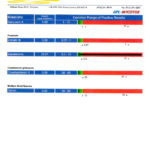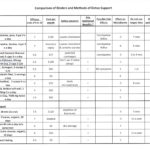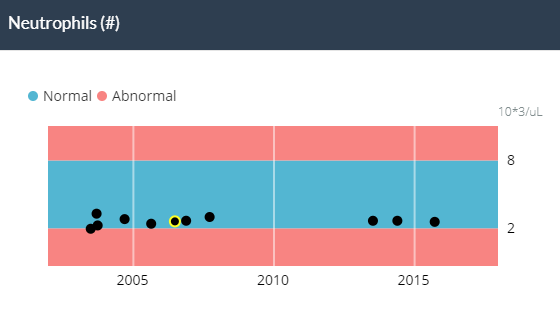 I just received the results from the first mycotoxin lab work I’ve done and it explains a lot. My doc, to her great credit, has been pushing me to do this test for several years, probably from my first appointment with her and I finally got it done. Why did I delay? I always suspected I was suffering from a mold colonization and of course the test is not covered by insurance! So my thinking was that I should eliminate my intestinal fungal infections and then do the test. But cleaning my gut has taken years and still isn’t done.
I just received the results from the first mycotoxin lab work I’ve done and it explains a lot. My doc, to her great credit, has been pushing me to do this test for several years, probably from my first appointment with her and I finally got it done. Why did I delay? I always suspected I was suffering from a mold colonization and of course the test is not covered by insurance! So my thinking was that I should eliminate my intestinal fungal infections and then do the test. But cleaning my gut has taken years and still isn’t done.
My MD even diagnosed me with CIRS which is either caused by mold toxicity or Lyme (or maybe both) and I was hoping my case was just Lyme related. Still I postponed the mycotoxin test, grrrrrr.
 You’ll see all of the mold toxins I have are immunotoxic, immunosuppressive and or hepatotoxic. Zearalenone is off the charts and that is the one that is hepatotoxic which might help explain why my efforts to clear infections have always been so difficult and so often were ended by migraines…
You’ll see all of the mold toxins I have are immunotoxic, immunosuppressive and or hepatotoxic. Zearalenone is off the charts and that is the one that is hepatotoxic which might help explain why my efforts to clear infections have always been so difficult and so often were ended by migraines…
 Wish I had done this test years ago. My Dr. has been saying for years that I wouldn’t get rid of any of my infections (Lyme etc) so long as I’m mold toxic.
Wish I had done this test years ago. My Dr. has been saying for years that I wouldn’t get rid of any of my infections (Lyme etc) so long as I’m mold toxic.
Note, the test result description says:
ZEA is deactivated primarily through glucuronidation; individuals with impairment to this pathway will be much more susceptible to this compound even at very low levels. Well here’s my livewello glucuronidation SNP report:
Interestingly, zearalenone or ZEA is a toxin produced by fusarium fungi that does colonize humans (called fusariosis) and maybe that’s why my level is extreme. Or maybe the test is just picking up ZEA from my daily coffee enemas. At $300 a pop, I’m not sure I’ll do enough retesting to ever know the source.
Fusarium infections in immunocompromised patients
Fusarium species cause a broad spectrum of infections in humans, including superficial, locally invasive, and disseminated infections. The clinical form of fusariosis depends largely on the immune status of the host and the portal of entry, with superficial and localized disease occurring mostly in immunocompetent patients and invasive and disseminated disease affecting immunocompromised patients. Risk factors for severe fusariosis include prolonged neutropenia and T-cell immunodeficiency, especially in hematopoietic stem cell transplant recipients with severe graft-versus-host disease. The most frequent presentation of disseminated fusariosis is a combination of characteristic cutaneous lesions and positive blood cultures, with or without lung or sinus involvement. The prognosis is poor and is determined largely by degree of immunosuppression and extent of infection, with virtually a 100% death rate among persistently neutropenic patients with disseminated disease. These infections may be clinically suspected on the basis of a constellation of clinical and laboratory findings, which should lead to prompt therapy. Treatment options include the lipid formulations of amphotericin B, voriconazole, and posaconazole. Prevention of fusarial infection among high-risk patients should be considered.
It’s funny how the PubMed study only mentions pharmaceutical options when chlorine dioxide is used in water treatment facilities to eliminate Fusarium and other pathogens to make it safe for human consumption. Another odditity is that ZEA and Fusarium are virtually non-existent on health websites and Facebook mold groups. There doesn’t seem to be any related collective knowledge or experience.
If I do have Fusariosis, where would it be hiding? I’d guess in my sinuses or gut. I haven’t seen Fusarium in my live blood microscopy though I do see what I beleive is Candida (also an immunosuppresant). If it isn’t in my body, it’s probably in my plumbing drains – this has been studied and it’s a common source of infection in hospitals.
Here’s what my MD has to say about all this (with my comments after the ->):
- Get your home inspected for mold! -> She’s been asking me to do it for years… here’s her mold-handout (click to download).
- Lycopene dosing: 100 mg / day is a good dose.
- Reservatrol: she likes Thorne’s Reservacel for it’s Nicotinamide riboside (NR) which supports the multiple functions of cellular mitochondria.
- Take modified citrus pectin (MCP) because it’s the only substance known to detox glyphosate which is an immune deregulator and neurotoxin. -> I’ve restarted.
- Increase your grapeseed extract up to 500 mg twice a day (go slow). This is an immune booster.
- Add clay or chitosan, it’s not only ZEA,the other results on your test are also significant. -> I chose clay because I’ve used it before and it seems chitosan is a sugar. Her toxic binders handout is on the right.

- Charcoal and cholestyramine are very similar – you don’t need both of them. -> I had some sugar-free cholestyramine compounded and will leave it on the shelf for a rainy day.
- Start titrating an herbal antifungal because yes, you’re probably colonized by mold. -> She gave me MYCOREGEN by Beyond Balance with these dosing instructions (this is her secret sauce and deserves it’s own post) not to be confused with her medication challenge instructions.
- Diet: the only safe meats are buffalo, pork and wild salmon. Eggs are fine but chicken and beef are bad for fungal problems.
- Switch to a mold toxin tested coffee. -> I bought the 5 pound bag from Bullet Proof.
- Repeat the urine mycotoxin test in one year.
- See you in 2 months.

